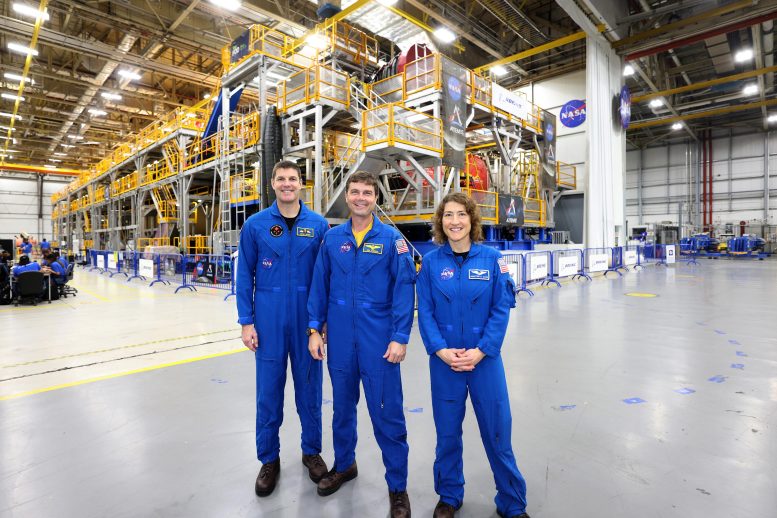
NASA and CSA astronauts inspected the Space Launch System’s core stage, vital for the upcoming Artemis II mission. The visit marked a year since Artemis I, underscoring NASA’s commitment to lunar exploration and diversity in space. Credit: NASA / Michael DeMocker
Artemis II astronauts, preparing for a lunar mission, examined the powerful SLS core stage, reflecting NASA’s ongoing efforts to return to and explore the Moon.
Artemis II NASA astronauts Reid Wiseman and Christina Koch of NASA, and CSA (Canadian Space Agency) astronaut Jeremy Hansen viewed the core stage for the SLS (Space Launch System) rocket at the agency’s Michoud Assembly Facility in New Orleans on November 16. The three astronauts, along with NASA’s Victor Glover, will launch atop the rocket stage to venture around the Moon on Artemis II, the first crewed flight for Artemis.
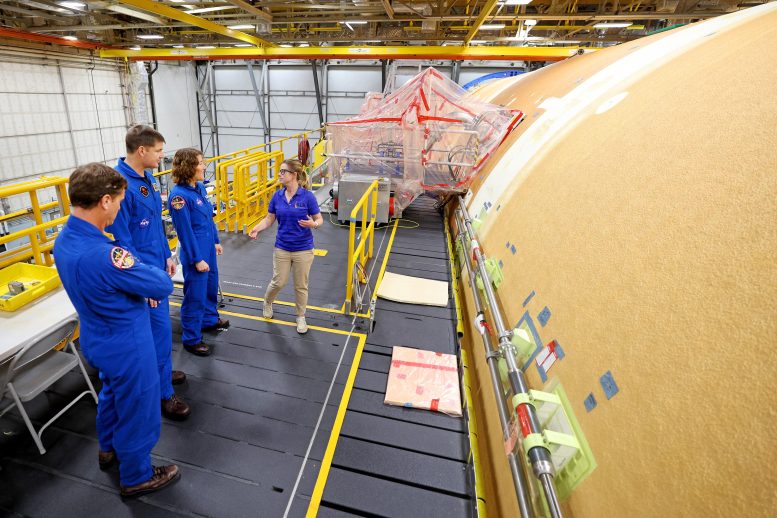
On November 16, Artemis II NASA astronauts Reid Wiseman and Christina Koch of NASA and CSA (Canadian Space Agency) astronaut Jeremy Hansen viewed the core stage for the SLS rocket at NASA’s Michoud Assembly Facility in New Orleans. Credit: NASA / Michael DeMocker
The SLS core stage, towering at 212 feet, is the backbone of the Moon rocket and includes two massive propellant tanks that collectively hold 733,000 gallons of propellant to help power the stage’s four RS-25 engines.
NASA, Boeing, the core stage lead contractor, along with Aerojet Rocketdyne, an L3Harris Technologies company and the RS-25 engines lead contractor, are in the midst of conducting final integrated testing on the fully assembled rocket stage.
At launch and during ascent to space, the Artemis astronauts inside NASA’s Orion spacecraft will feel the power of the rocket’s four RS-25 engines producing more than 2 million pounds of thrust for a full eight minutes. The mega rocket’s twin solid rocket boosters, which flank either side of the core stage, will each add an additional 3.6 million pounds of thrust for two minutes.
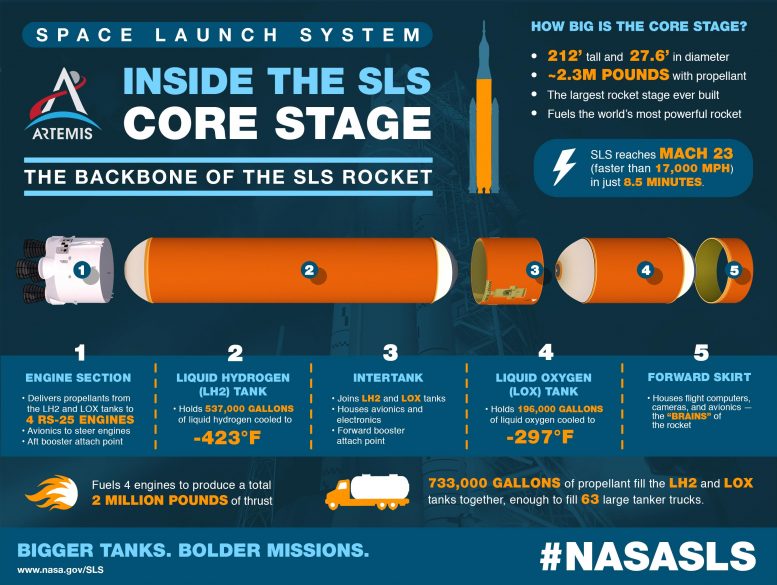
We need the biggest rocket stage ever built for the bold missions in deep space that NASA’s Space Launch System rocket will give us the capability to achieve. This infographic sums up everything you need to know about the SLS core stage, the 212-foot-tall stage that serves as the backbone of the most powerful rocket in the world. The core stage includes the liquid hydrogen tank and liquid oxygen tank that hold 733,000 gallons of propellant to power the stage’s four RS-25 engines needed for liftoff and the journey to Mars. Credit: NASA/MSFC
The astronauts’ visit to Michoud coincided with the first anniversary of the launch of Artemis I. The uncrewed flight test of SLS and Orion was the first in a series of increasingly complex missions for Artemis as the agency works to return humans to the lunar surface and develop a long-term presence there for discovery and exploration.
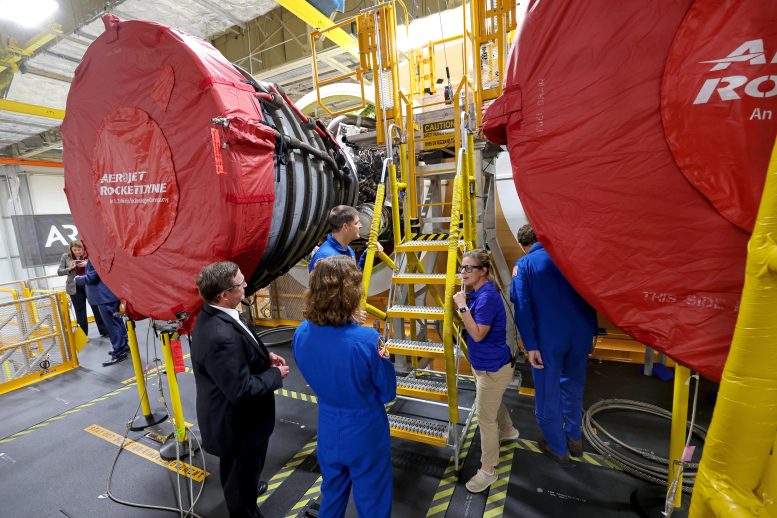
At NASA’s Michoud Assembly Facility, three members of the Artemis II crew, comprising astronauts from NASA and CSA, inspected the SLS core stage, a key structure in their forthcoming lunar journey. Credit: NASA / Michael DeMocker
NASA is working to land the first woman and first person of color on the Moon under Artemis. SLS is part of NASA’s backbone for deep space exploration, along with the Orion spacecraft, advanced spacesuits, and rovers, the Gateway in orbit around the Moon, and commercial human landing systems. SLS is the only rocket that can send Orion, astronauts, and supplies to the Moon in a single mission.



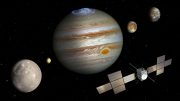





“The SLS core stage, towering at 212 feet, is the backbone of the Moon rocket and includes two massive propellant tanks that collectively hold 733,000 gallons of propellant to help power the stage’s four RS-25 engines.”
—–
This is such a waste! We should build a space elevator to get into space and a real space station, miles in diameter, where space ships can be built and dispatched from that don’t need to land or take off from planets. There would be a lot more room for crews and capability of moving bigger payloads. We are so shortsighted!
Dear Jojo;
Jacobs Ladder (a fun name for the Space Elevator) would require material many orders of magnitude stronger and lighter than anything known (the stuff is known in the aerospace industry as “unobtanium”). We are sitting here banging away on our Puters and thinking, ” Gee wiz, how hard could it be to simply run a cable up to a satellite in geo Sync orbit? We are after all just sitting here, No?
No, were not. We are sitting inside a giant merry-go-round with the windows closed and incorrectly perceive our state of motion.
We don’t sense the Earth’s rotation because we are along for the ride, so we don’t realize that the complete system is spinning around and “the ladder’ is therefore subject to enormous centrifugal forces.